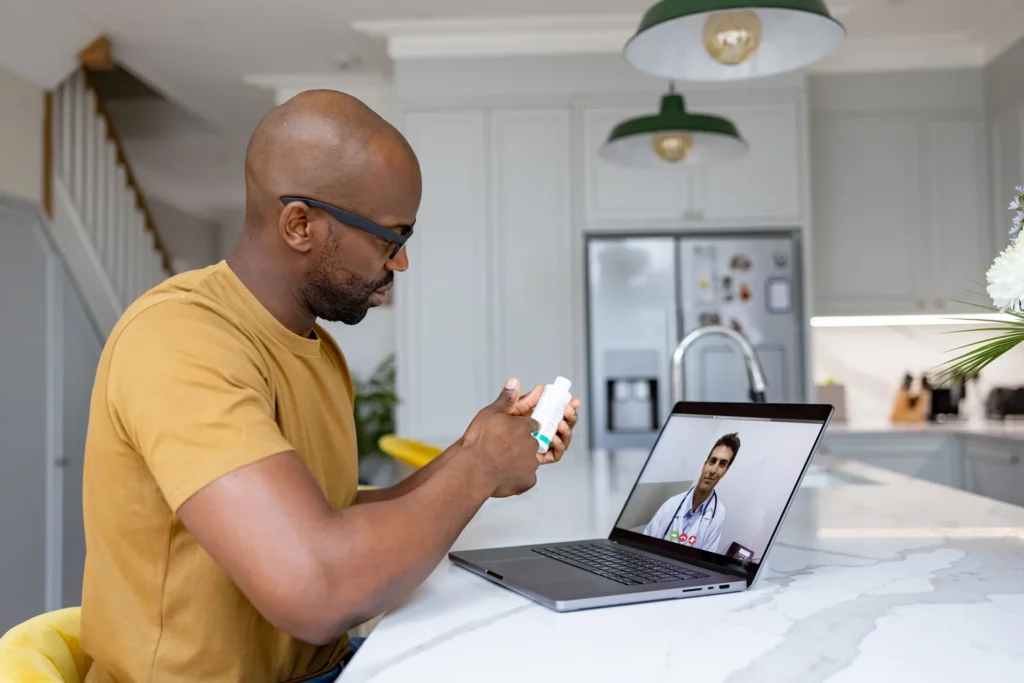In an era where individuals are increasingly looking to reclaim control over their health, discussions around testosterone – often synonymous with vitality and strength – have transitioned from locker rooms to boardrooms and online forums. Testosterone, a hormone primarily associated with male attributes and reproductive functions, plays a crucial role in muscle mass, fat distribution, bone density, and red blood cell production. With age, testosterone levels can naturally decline, leading to a complex interplay of physical and mental changes.
testosterone replacement therapy online has surged in popularity as an option for those seeking to counteract the effects of this decline. It is essential to understand what TRT entails, how it can be safely administered, and the critical role of medical guidance when pursuing this treatment, particularly when it’s accessed online.
Table of Contents
ToggleWhat is Testosterone Replacement Therapy?
Testosterone Replacement Therapy, as the name suggests, is a medically supervised treatment that aims to raise the body’s testosterone levels back to a healthy range. TRT can be approached in various forms, including injections, skin gels, transdermal patches, mouth patches, pellets, and oral preparations, each method having distinct benefits and considerations.
The primary goal of TRT is to alleviate symptoms that result from low levels of the hormone, such as reduced libido, erectile dysfunction, fatigue, and changes in mood. However, TRT is not without controversy. The therapy has been the subject of intense debate concerning its efficacy and safety, with studies on its long-term impact yielding mixed results.
The Proliferation of Online TRT Services
The digital age has facilitated an exponential growth in online TRT services. These platforms often offer a convenient experience, allowing users to consult with healthcare providers remotely, receive prescriptions, and have medications delivered to their door. They may also claim to provide more affordable and discreet options compared to traditional in-person medical services.
Yet, the ease of online access to TRT may lead to significant health risks without proper oversight and diagnosis. One of the core issues with online TRT services is the potential bypassing of essential steps in the healthcare process, such as thorough medical history checks and in-person physical examinations. These steps are critical in spotting underlying health conditions that may be exacerbated by TRT or could contraindicate its use altogether.
The Importance of Medical Oversight in TRT
Seeking medical oversight for TRT is non-negotiable. A comprehensive approach that involves an initial consultation with a healthcare provider, the establishment of personalized treatment plans, and regular follow-ups is vital. Through this process, healthcare professionals can monitor the patient’s response to therapy, adjust the treatment as necessary, and provide a holistic framework that includes lifestyle modifications to support the patient’s overall health goals.
Healthcare providers play a pivotal role in advocating for safe and appropriate TRT use. They should discuss the potential benefits and risks of the therapy, screen for contraindications, and help patients set realistic expectations. Furthermore, medical guidance ensures that TRT is part of a broader health strategy, addressing diet, exercise, mental health, and other areas that may influence testosterone levels.
Debunking Myths Around TRT
Misinformation surrounding TRT is rife. One common myth is that TRT is a fountain of youth, capable of turning back the clock and endowing users with inexhaustible vigor. The reality is more nuanced. TRT is a tool to manage specific symptoms related to low testosterone, and its effects vary from person to person. Understanding these limitations is crucial to avoid unfounded expectations and disappointment.
There’s also the misconception that TRT is inherently unsafe. While there are risks associated with the therapy, including the potential for cardiovascular issues, the picture is not as dire when utilized appropriately under the guidance of a healthcare professional. It is vital to weigh these risks against the benefits and to consider whether the symptoms warrant the intervention.
The Legal Implications of Online TRT Access
The legal landscape for online TRT providers is evolving. Regulations vary widely by jurisdiction, and the absence of a clear legal framework can create ambiguity regarding the roles and responsibilities of online TRT services. This lack of clarity can be exploited, resulting in suboptimal care for the consumer.
Individuals engaging with online TRT services must be aware of the legal standards these providers are required to meet. It is advisable to research and choose services that are transparent about their licensure, the qualifications of their providers, and their adherence to established medical practices and guidelines.
The Role of Informed Consent in TRT
Informed consent is essential in the context of TRT. Patients need to understand the nature of the treatment, the potential risks, and the expected outcomes before they can reasonably consent to undergo therapy. The complexity of TRT necessitates thorough discussions that enable individuals to make educated decisions about their health.
For online TRT services, the principle of informed consent becomes more challenging to uphold without the direct interaction between patient and provider. Tools such as detailed informational resources, interactive features that facilitate questions, and easily accessible support structures can aid in ensuring that patients are adequately informed.
Optimizing the Online TRT Experience
Optimizing the online TRT experience requires a careful balance of convenience and quality. Providers offering these services must prioritize user education, personalized care, and transparent communication. They should also work to improve the seamlessness of the online-to-offline care transition, helping patients integrate their TRT into a broader health management plan.
For individuals considering or already engaged in online TRT, open dialogues with healthcare providers, compliance with treatment protocols, and regular health check-ins are cornerstones of a successful and safe TRT experience.
The Future of TRT: Balancing Accessibility and Safety
The conversation about TRT, particularly in its online iteration, is far from over. As technology continues to reshape the healthcare landscape, maintaining a balance between accessibility and safety is critical. It is imperative that the development and deployment of online TRT services prioritize both the user experience and the delivery of high-quality, ethical healthcare.
In the future, we can expect to see more robust platforms that integrate advanced diagnostic tools, telehealth services, and personalized treatment algorithms to enhance the safety and effectiveness of TRT. With these advancements, individuals may find even greater opportunities to optimize their health, with the assurance that their online healthcare experience is truly revitalizing – not just their testosterone levels, but their overall well-being.




